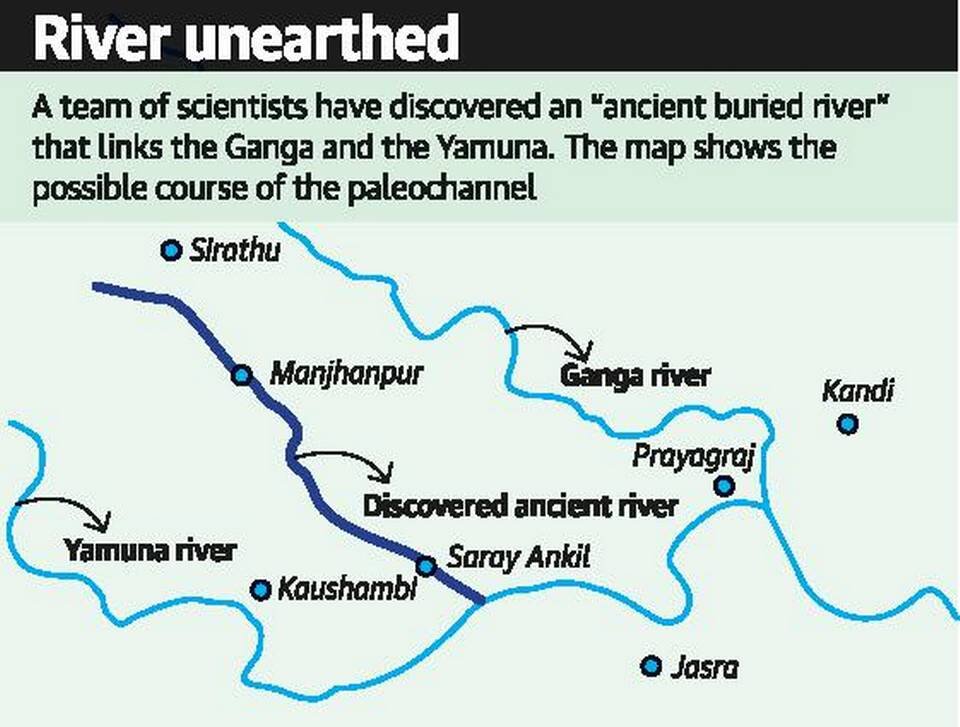Geography
Ancient River Unearthed in Uttar Pradesh
- 01 Oct 2019
- 3 min read
The Union Jal Shakti Ministry has excavated an old, dried-up river in the Prayagraj during geophysical survey covering the Prayagraj and Kaushambi region in Uttar Pradesh.
- An excavated river linked the Ganga and Yamuna rivers.
- The “Ancient Buried River” is around 4 km wide, 45 km long and consisted of a 15-meter-thick layer buried under the soil.
- The newly discovered river was a buried paleochannel that joins the Yamuna river at Durgapur village, about 26 km south of the current Ganga-Yamuna confluence at Prayagraj.
- The genesis of these buried rivers followed a Report on PaleoChannel on North-West India.
- The knowledge on subsurface connectivity between Ganga and Yamuna rivers will play a very crucial role in the planning of Ganga cleaning and protecting safe groundwater resources,
Palaeochannels
- A channel that is no longer part of an active river system and has ceased to be a conduit of water is commonly referred to as a palaeochannel.
- It occurs when rivers change their course either due to the movement of tectonic plates or severe floods and cut new ones.
- Some of the palaeochannels lie buried under younger sediments.
- Palaeochannels are commonly occurring landforms in alluvial landscapes, and have an economic significance because of their use in the exploration for freshwater resources, artificial recharge and storage of groundwater.
- Additionally, they are of importance in the location and assessment of mineral deposits such as uraniferous ores, gold, silver and other placer deposits hosted in them.
Report on PaleoChannel on North-West India
- The report has been prepared by the K.S. Valdiya Committee under the Ministry of Jal Shakti.
- The report is based on the study of the land texture, piles of sediments, shapes, and features of states of North-West India including- Rajasthan, Haryana, and Punjab.
- The found sediments are reminiscent of ones found in present-day Ghaggar, Ganga, and the Yamuna.
- The report is an assertion of the assumption that River Saraswati originated from Adibadri in Himalaya to culminate in the Arabian Sea through the Runn of Kutch.
- The report also states that the river once upon a time was the lifeline of the North-Western states of India.






